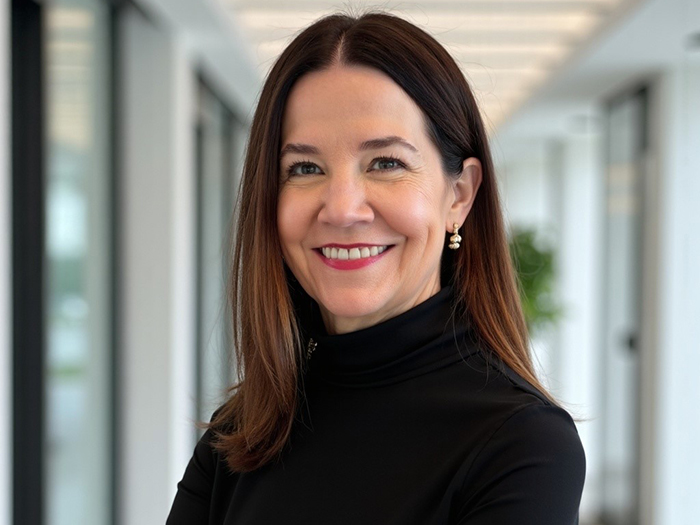Take a Page From Cargill’s Book and Make the Right Moves to Expand Your Ergonomics Program

Any large company that’s tried to implement an ergonomics program knows that things can go awry if a one-size-fits-all approach is adopted.
Employees in different locations — or even differing departments within the same site — have different tasks and therefore different needs. Some employees may have had prior ergonomics training while others, especially younger workers, may only have a basic knowledge of best safety practices.
In order to make sure that an ergonomics program is successful, it needs to be adaptable enough to meet all of these various needs.
“The flexibility isn’t about reducing the expectation. It’s about ensuring that you again put the right amount of effort in to deal with the risk that you have,” said David Brodie, ergonomist lead North America, in the health and safety domain at Cargill.
Brodie discusses Cargill’s strategy and how other companies can apply their approach in an on-demand session for the National Ergonomics Conference and ErgoExpo, of which he is a program co-chair.
The session “Developing a Targeted and Flexible Ergonomics Program” details the early stage planning issues companies need to consider when expanding their ergonomics programs and why flexibility is key during development.
“We’re going to see how to organize, how to step back and look at either your organization or your location and understand how to start thinking about understanding the risks that you’re dealing with,” Brodie said.
Cargill’s History with Ergonomics
Cargill’s ergonomics journey began shortly after Brodie joined the company in 2009. Back then, the program was in 36 locations, eventually growing to 40 under Brodie’s leadership, and it covered more than 25,000 employees working in the meat processing industry, where work can be intense and demanding, even dangerous.
“Our focus was a very intensive, progressive approach to implementing a very broad ergonomics program for protein businesses,” Brodie said.
The program, which Brodie and another ergonomist developed, kicked off at a single plant in Ontario and has since expanded throughout Cargill’s protein business. From it’s initial creation, Brodie knew that flexibility in execution would be key since the company knew they wanted to expand early on.
“The idea is to create an ergonomics program but one that is flexible and targeted to meet the needs of each location,” Brodie said.
The program has been wildly successful, Brodie said. In the 10 years the program has been running, Cargill was able to achieve a 68% reduction in ergonomic-related injuries.
Expanding the Program
After the program’s initial success, Cargill decided to expand it to all of North America — a huge upgrade. The initial 40-site program will now be expanding to over 400 facilities, each with different needs.
“We are moving to implement the program across all of North America, which will now encompass over 400 facilities,” Brodie said.
In addition to the challenges that come with expanding an ergonomics program at that scale, Cargill had to adapt to different location sizes and needs. The flexibility that he identified as a priority early on will now be even more critical.
“No two places have the same need,” Brodie said.
“We have plants that are different. We have cultures that are different. We have resources that are different, and we have people that have different levels of background and competency.”
Because of all these different factors, Cargill knew early on that it had to create an ergonomics program that is adaptable rather than one that is just implemented from location to location without taking into account the different needs of each site — a challenge other larger companies could face when designing their own ergonomic safety protocols.
“If you’re in a business where you have a couple of plants and everything’s identical, then you can have a consistent program,” Brodie said.
“But the more variety you have in the work you do and the more businesses you have, you have to incorporate that flexibility to allow people to be successful.”
Since they’re early on in the planning process, Brodie plans to continue presenting on Cargill’s program at future National Ergonomics Conference and ErgoExpo events. That way, attendees can see how the program continues to develop as it grows. And they can learn how to apply Cargill’s lessons to their own programs.
“It’s about understanding your environment, and understanding your people, your competency and how to work with them,” Brodie said.
“You’re seeing the evolution of a program and the thought process to get to that point.” &

National Ergonomics Conference and ErgoExpo is back and planning an exciting program for 2021. We’re eager to bring everyone together to share the tools and ideas that will move our community forward through the challenging times ahead.
We’re eager to get face-to-face with our friends and peers again — safely in our Vegas home at the Paris Hotel, November, 2-5, 2021. We’re currently building an exciting program for the show and look forward to seeing everyone in-person while still adhering to all safety protocols set forth by local and national health authorities at the time of the event.
The National Ergonomics Conference is proud to continue to offer thought-provoking ideas and tangible tools and strategies to help ergonomic and safety professionals improve productivity, product quality and profitability while reducing workplace injuries. This year, we’ll feature five tracks — program management, office ergonomics, advances in ergonomics technologies, industrial ergonomics and safety, and health care ergonomics, aging and wellness.
In the meantime, we’ll continue bringing you free virtual, educational content through our digital sessions series. Register today so that you never miss a session and check out our ever-growing library of on-demand sessions today!










